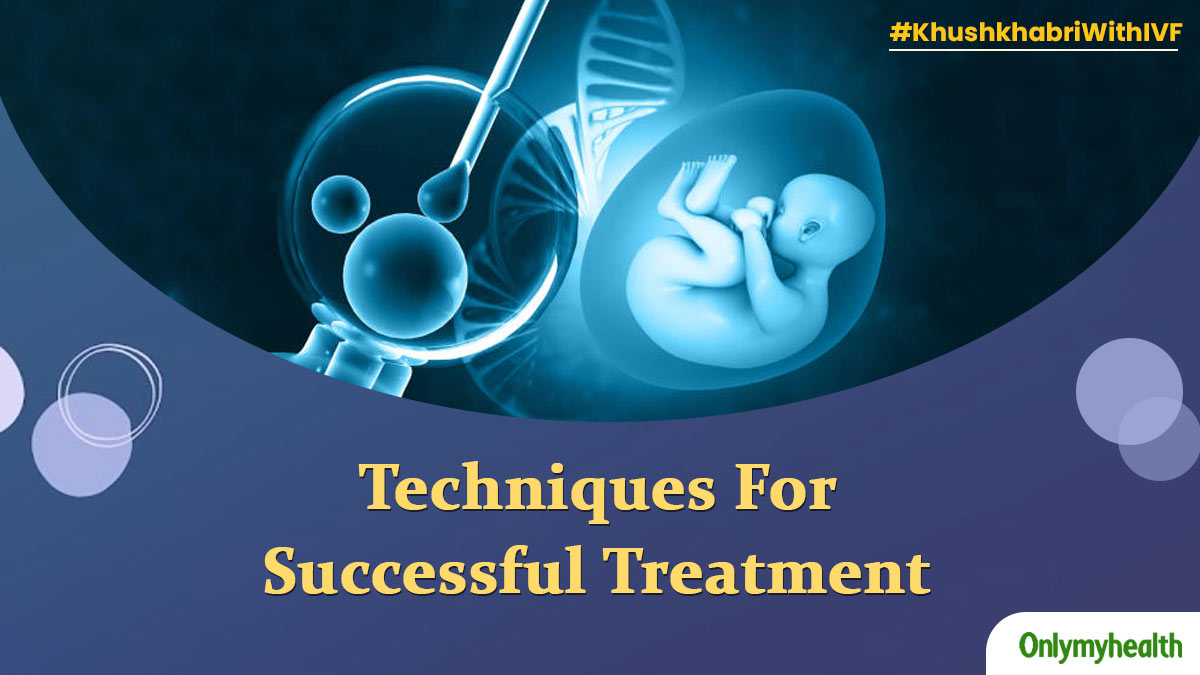
#KhushKhabriWithIVF: Embryology, the study of embryos and their development, has witnessed remarkable advancements in recent years, thanks to cutting-edge technologies. These technologies have revolutionised the field of reproductive medicine, particularly in the context of fertility treatments. Techniques such as ICSI, PICSI, newer culture media, embryo biopsy for PGT-A, MACS, time-lapse imaging of embryos, and microfluidics have significantly improved the success rates of assisted reproductive technologies. Under our campaign ‘Khush Khabri With IVF’ we aim to decode all aspects of IVF to our readers to raise awareness. This article is all about the latest technologies that offer higher chances of success as shared by Dr. Niharika, Senior Infertility Specialist, Kamineni Fertility Centre, Hyderabad.
Table of Content:-
Intracytoplasmic Sperm Injection (ICSI)
ICSI has emerged as a highly effective method in cases of severe male infertility, where conventional IVF techniques may not be successful. With ICSI, a single sperm is injected directly into an egg, facilitating fertilisation. This technique allows embryologists to bypass barriers that prevent sperm from naturally fertilising the egg. ICSI has dramatically improved the chances of fertilisation and subsequent embryo development, making it an invaluable tool in fertility treatments.
Also Read: 6 Questions About IVF Cost That Couples May Want To Ask The Expert

Physiological Intracytoplasmic Sperm Injection (PICSI)
PICSI is an extension of ICSI that aims to select the best sperm for fertilisation. It involves utilising a culture dish coated with hyaluronan, a substance similar to that found in the human reproductive tract. Sperm with good structural and functional characteristics bind to this substance, indicating their potential for successful fertilisation. PICSI helps embryologists choose the most viable sperm, enhancing the chances of a successful pregnancy.
Newer Culture Media
Culture media are vital components in the laboratory environment where embryos are grown after fertilisation. The development of advanced culture media has significantly improved embryo quality and development rates. These media contain precise formulations of nutrients, growth factors, and amino acids that provide an optimal environment for embryo growth. Newer culture media mimic the natural conditions in the female reproductive tract, enabling healthier embryo development and increasing the chances of successful implantation.
Also Read: Expert Answers 5 Questions On How To Get Pregnant With IVF

Embryo Biopsy for Preimplantation Genetic Testing for Aneuploidies (PGT-A)
PGT-A, formerly known as Preimplantation Genetic Screening (PGS), involves the biopsy of embryos to assess their chromosomal composition before transfer. This technique allows embryologists to identify embryos with chromosomal abnormalities, such as aneuploidies (an abnormal number of chromosomes). By selecting chromosomally normal embryos, the chances of successful implantation and a healthy pregnancy are significantly increased.
Magnetic-Activated Cell Sorting (MACS)
MACS is a technique that helps in the selection of high-quality sperm or embryos. It involves the use of magnetic beads coated with specific antibodies that selectively bind to target cells. By labelling sperm or embryos with these beads, embryologists can isolate the desired cells, reducing the likelihood of abnormalities or genetic disorders. MACS has proven particularly useful in cases of male factor infertility and recurrent pregnancy loss.
Also Read: Can I consider IVF After Miscarriage? Success Rates, Options and More
Time-lapse Imaging of Embryos

Time-lapse imaging involves capturing continuous images of developing embryos at regular intervals. This technique allows embryologists to closely monitor embryo development without disturbing the cultured embryos. By analysing these images, embryologists can observe crucial developmental milestones and select the embryos with the highest chances of success for transfer. Time-lapse imaging also enables the detection of subtle morphological changes that may indicate embryo quality, further enhancing the selection process.
Also Read: Do's and Don'ts After Embryo Transfer For Successful Pregnancy
Microfluidics
Microfluidics is an emerging technology that employs miniature devices to manipulate fluids on a microscopic scale. In embryology, microfluidic systems enable the analysis of sperm and embryos with unprecedented precision. These devices can assess sperm quality, identify motile sperm for ICSI, and optimise embryo culture conditions. Microfluidics technology holds great promise for improving success rates in fertility treatments by providing real-time information and enhancing embryo selection processes.
These technologies enable embryologists to select the most viable sperm and embryos, optimise culture conditions, and identify chromosomally normal embryos. As a result, individuals and couples struggling with infertility have a higher chance of achieving successful pregnancies and fulfilling their dreams of parenthood. With ongoing research and innovation in the field, the future of embryology holds even more promising possibilities for individuals seeking fertility treatments.
Also watch this video
How we keep this article up to date:
We work with experts and keep a close eye on the latest in health and wellness. Whenever there is a new research or helpful information, we update our articles with accurate and useful advice.
Current Version